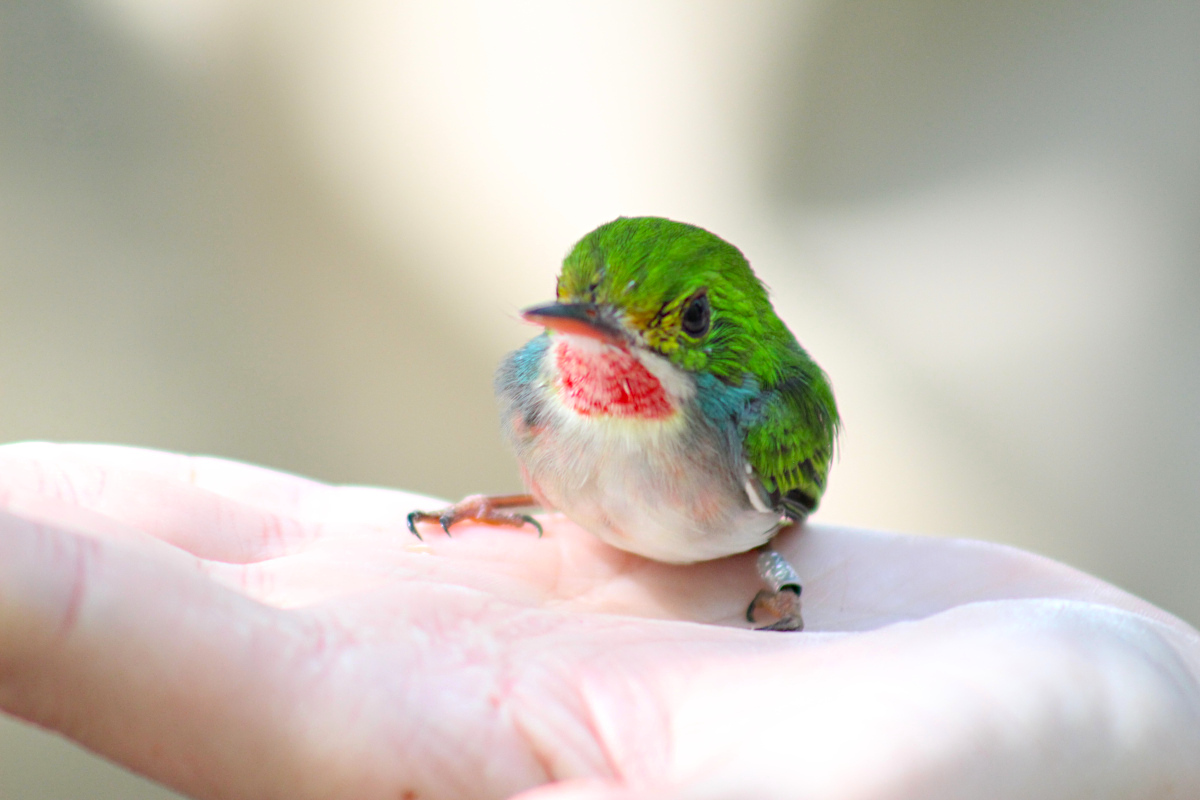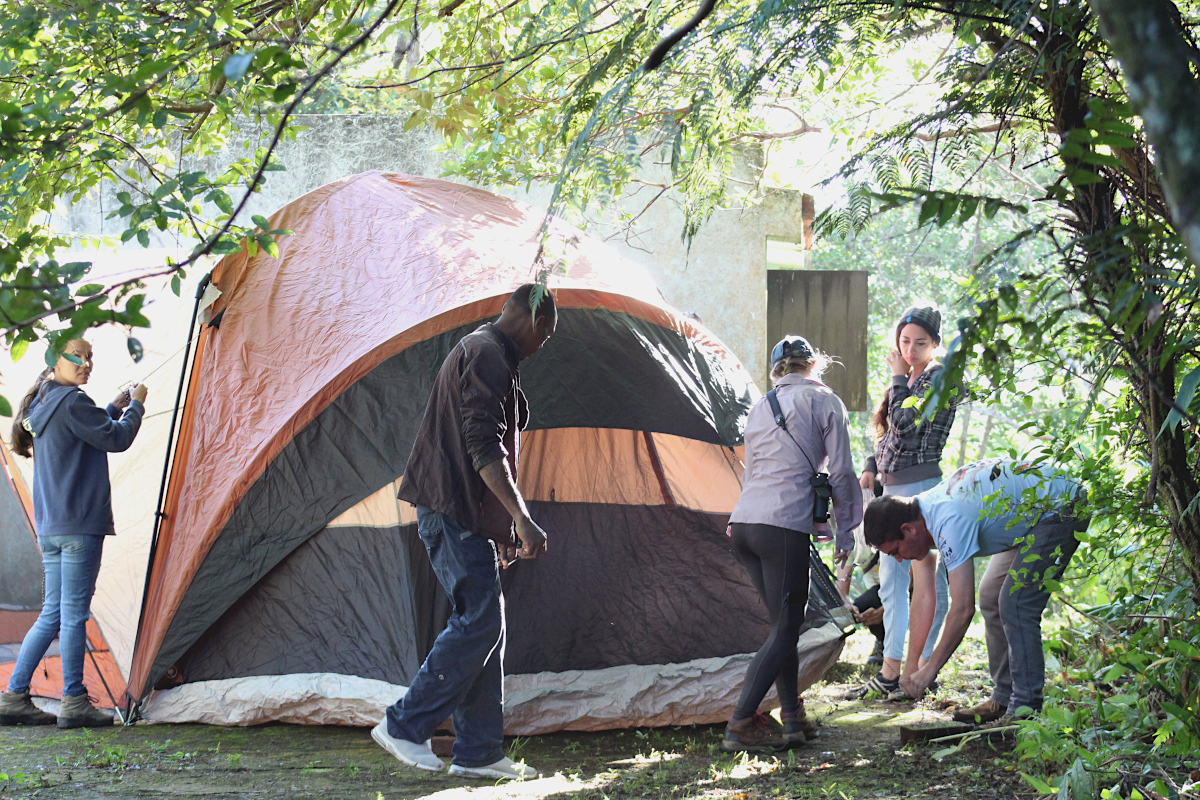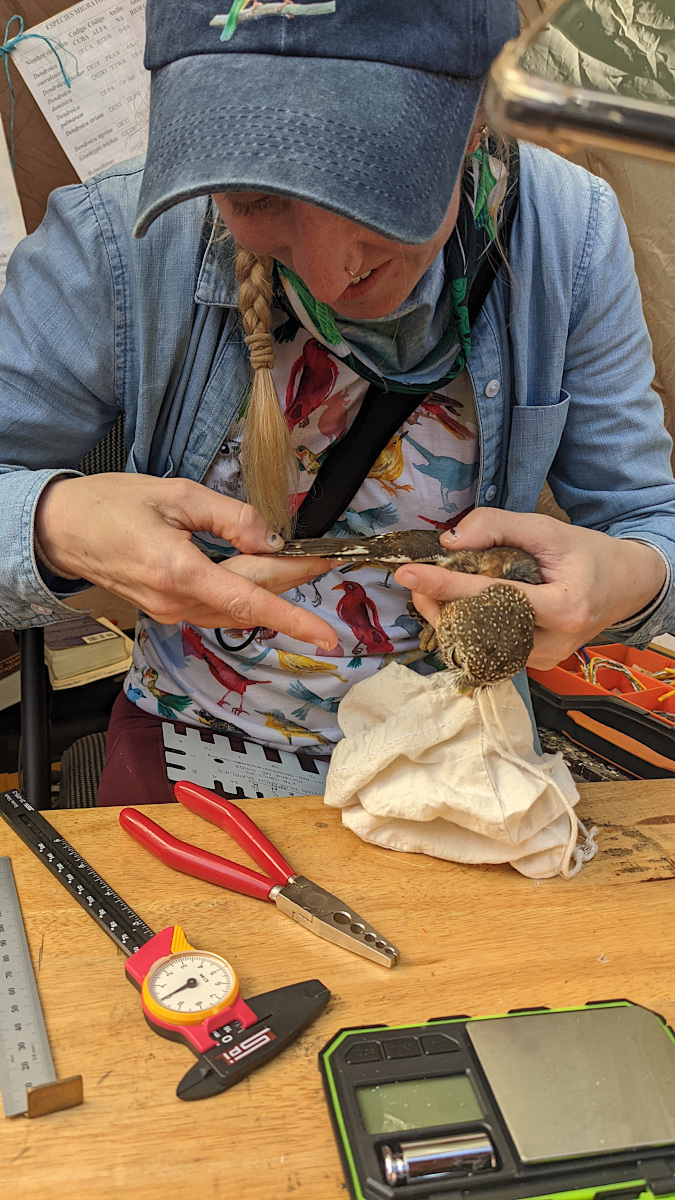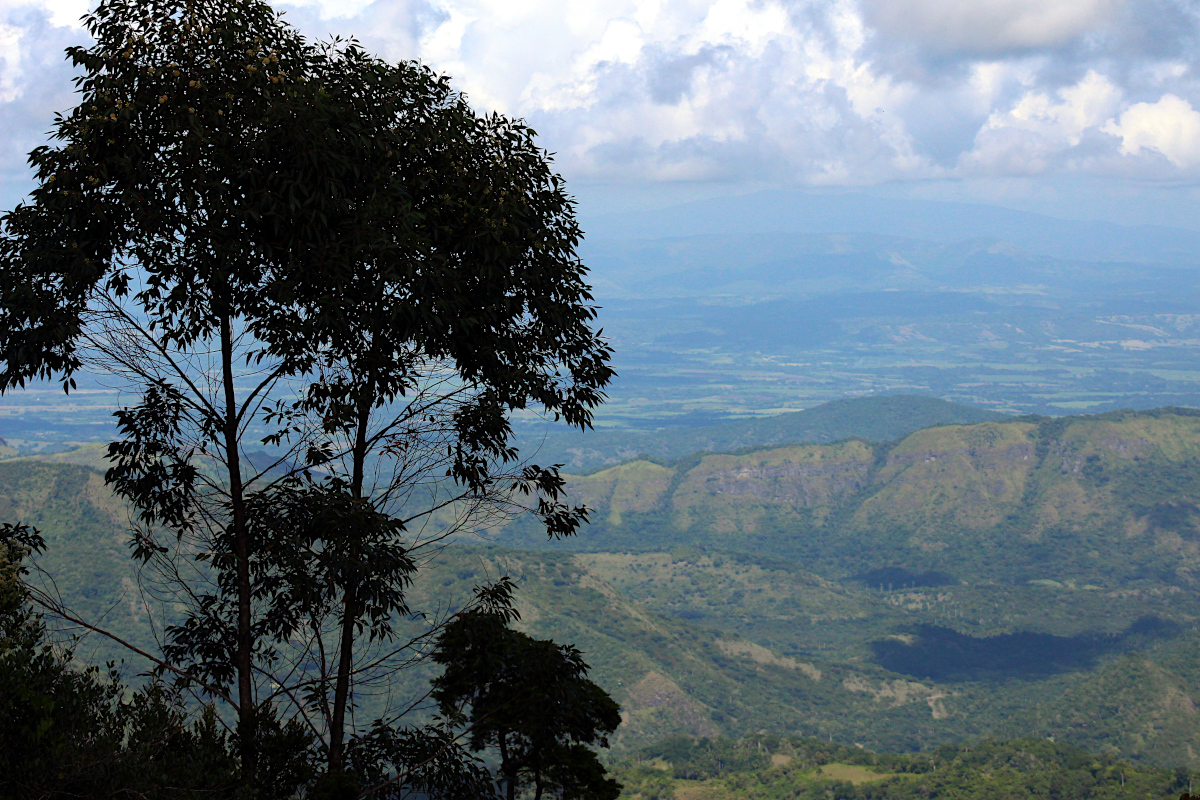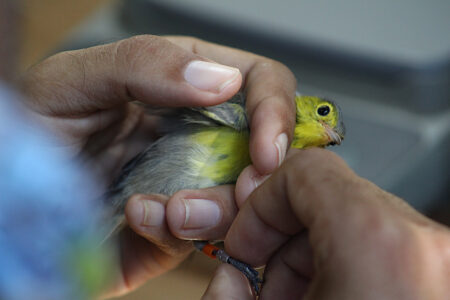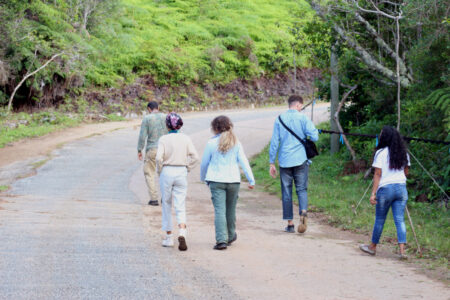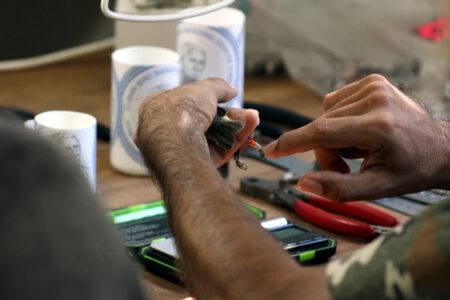In 2022, Cuba held its first ever bird banding workshop, part of BirdsCaribbean’s ongoing efforts to build a banding community in the Caribbean. Find out more about bird banding in Cuba and about how the workshop went from Cuban bird bander and ornithologist Daniela Ventura.
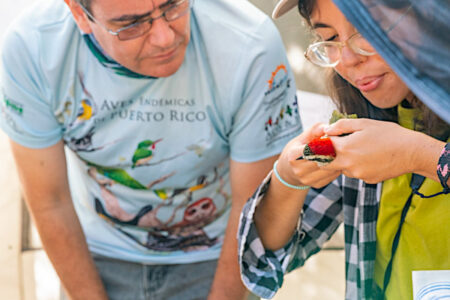
The year 2022 was pivotal for bird banding in the Caribbean. Earlier in March, the first Caribbean Bird Banding Workshop was held in The Bahamas. Bird researchers and conservationists from several islands, attended with the goal of learning about ethical and scientific banding protocols and acquiring the skills to successfully run their own banding stations. The long-term dream is to develop a network of collaborators, spread across the region, that can contribute with insights into bird movements and population status of migratory and resident species. This event alone would have sufficed to call the year a landmark. But we Caribbeans like to think BIG.
Therefore, the Caribbean Biological Corridor (CBC) partnered with BirdsCaribbean to host the first ever Banding Workshop in Cuba, which took place from November 4th to the 18th in Santiago de Cuba. Cuba being the largest island in the region with the longest banding tradition, is an essential part of this network. The goal of this workshop was ambitious: gather people and institutions with current banding protocols in the island to organize them into a National and Regional Banding Network and host a North America Banding Council (NABC) certification. NABC certification is widely accepted as the banding standard throughout the Americas. This is the certification that BirdsCaribbean is aiming to use as part of the Caribbean Bird Banding Network.
This workshop represented a milestone in my bird banding career. Back in March, I would not have imagined that my banding skills were going to be tested that soon. The NABC certification is a rigorous process of theoretic and practical exams that evaluates your abilities and knowledge in bird banding, according to the standards and practice of that institution. I accepted the challenge. It meant a great incentive to boost my skills, and if I became certified, I would be confident enough to pursue my long-cherished dream of starting my own banding station in Havana. With those motivational thoughts in mind, and the prospects of seeing some eastern endemic birds that I don’t get to see often, I embarked on the wearisome 12-hours bus trip to Santiago. It would prove to be worth it.
A very long and thin island
Havana, the capital city and my hometown, is 868 km away from Santiago de Cuba, the second most important city in the country, which is famous for its carnival and its scorching sun all year round. The tiresome road trip was endurable thanks to the best company I could possibly have: my friends Esteban Márquez and Juan Carlos Fernández (JC). Their good humor guaranteed the trip was joyful. Actually, sometimes I was just about to doze off and JC interrupted it with a joke. During the long journey to Santiago, we were picking up participants from other provinces.
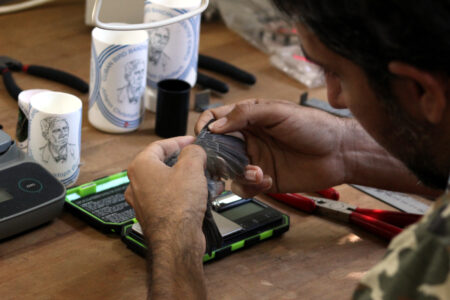
The ride took us all night and so we arrived at our destination at the same time the first dawn chorus of birds began singing. The Ecological Reserve Siboney Juticí is a karstic landscape of marine terraces—ancient ocean floor now elevated gazing at the Caribbean Sea. The typical coastal shrubby and thorny vegetation is a paradise for migratory warblers and plenty of Cuban endemics, like the Oriente Warbler, Cuban Gnatcatcher, and Cuban Bullfinch. It was a perfect location for the longest running banding station in Cuba, named after the German scientist that was a pioneer of Cuban ornithology: Juan Cristóbal Gundlach. The first four days of the workshop were scheduled to be spent here, coinciding with the monthly period of banding sessions occurring at the station.
We arrived yawning and with sleepy eyes, only to meet an incredible welcoming committee. Freddy Rodríguez Santana, the leader of the station and the most dedicated and diligent workshop organizer, received us with a beaming smile. The station and protected area staff were also cheerful and active, almost as if it wasn’t 5 am in the morning! They seemed ready to start working and I, honestly, was only longing for a bed.
We didn’t have to wait for long for coffee and breakfast. Behind that magic brew that stirred us all a little, was the heart and soul of the banding station: Emelina. She is the keystone that holds the station and everyone together. Eme (as colleagues called her lovingly) is more than the excellent cook that prepares the delicious food and drinks that keeps you sane in the melting hot weather. She is also a kind and caring woman so all of us, workers and visitors alike, become instantly her spoiled children.
When the introductions were over, Freddy quickly rushed us to the rooms, so we could settle in and rest a few hours before the work started. The objective of the day was setting up the mist nests for the upcoming banding session, and to officially inaugurate the workshop.
Learning about Cuba’s longest running banding station
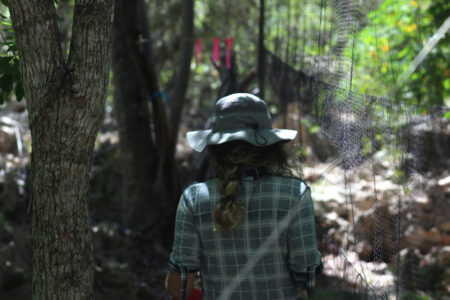
The workflow of a constant-effort banding station has a unique flavor. For twelve years, researchers of BIOECO and the staff of the protected area (some of whom have banding training and certification from Germany) have conducted monthly banding sessions at the reserve. Not even hurricanes nor a pandemic have stopped their committed work. We witnessed its smooth organization from the moment we arrived. Each person plays an invaluable role, from the field technicians that know the exact location of every single net, to the researchers that band the birds and take the data. Setting up the nets is an essential process of every banding protocol. A total of 22 nets are placed along three different trails. The park’s staff kindly took their time to show us and guide us through the process step by step. Left alone they would have done the job in less than half an hour. That is how well they do their job!
With the nets ready to start banding the next day, we headed to the classroom to receive the official welcoming. Thirteen participants from all around Cuba, and my friend Esteban from Venezuela, were going to receive training in the nitty-gritties of banding birds for scientific endeavors. Esteban’s main motivation, along with another three of us, was taking the NABC exam that would allow us to be the first Caribbean certified banders. Even though the stakes were high, we had the best teachers: Holly Garrod and JC Fernández, NABC trainers, and of course, the staff at the JCG station with their gathered experience of 12 years of nonstop field work.
A season of Blackpoll Warblers
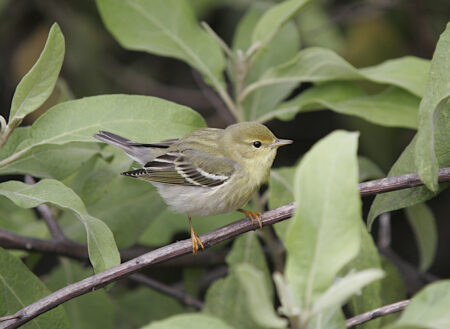
I was expecting to meet and get a closer look at birds that I can’t find so easily at mist-nets in western Cuba. But Blackpoll Warblers were a treat beyond my wildest daydreams. I had the privilege to band a few of the dozens of individuals we caught during these three days. Blackpolls are world champions in the bird migration contest. Some individuals are known to fly up to 8,000 km from their breeding grounds in Alaska to their wintering areas in Brazil. They also take a route that leads them to fly out over the Atlantic Ocean sometimes three-days long without making any stop. That easterly path is the reason why they are more commonly found in places like Santiago, and very rare in the western side of Cuba.
Uncommon birds for me, but the daily bread for our banding colleagues in Santiago, were Cape May Warblers and Black-throated Blue Warblers. Cape-Mays can be very tricky to age and sex, because there are a lot of individual variability and overlap, but Black-throated proved easier for me. These challenges of new species were just exactly what we needed to get ready for the NABC exam. A bander must also be prepared to deal with species that he or she has never encountered before. That is why learning the theory behind molt strategies and molt extents in bird families in general is a requirement for getting a better understanding on the topic. And why we not only had the morning sessions at the banding table, but presentations about these subjects in the afternoons. Luckily, we had Emelina´s miraculous coffee to keep our brains working!!
Butter butts in the cloud mountains
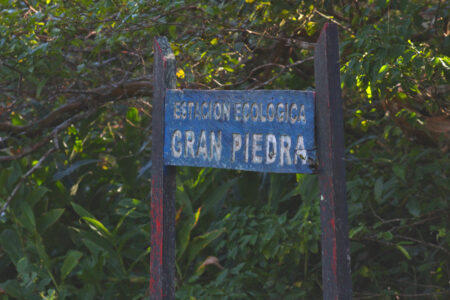
Packing jackets and scarves are not something you would expect for a banding trip to Santiago, which is known as the “tierra caliente” or “hot land” to Cubans. But precisely because I am a daughter of the tropics, temperatures below 20 degrees Celsius already make me shiver. The second part of our banding training was going to take place in the cloud evergreen forest of Santiago’s mountains. From the melting sun and heat of Siboney, we moved to the chilly weather of Gran Piedra biological station. The landscape was surreal. We got up before dawn every day, only to walk into a never-ending cloud. We felt the moisture dampening our clothes and boots, and chilling our bones to the core… Ok ok, you might think I am exaggerating. But if you do not believe me, ask Holly, who knows the winter in cold Montana and was as frozen as me. Luckily, even the sun warms up there, so as the day grew old, the temperature got mildly cozy, neither too cold nor too hot—the perfect weather for banding.
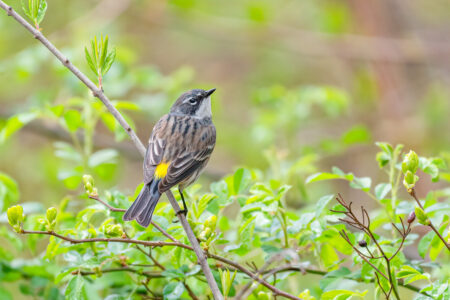
And the perfect weather too for some northern warblers that do not usually migrate far south, it seemed. I had never seen a Yellow-rumped Warbler before, and for that week at Gran Piedra, I must confess I almost got tired of them. There were just too many, an incredible and rare event not only in Santiago, but in Cuba. These birds are known to be facultative migrants, which means there are years when most of the population ventures farther south, and there are others when they mostly stay close to their breeding areas. Scientists do not yet understand well the mechanisms regulating these cycles, but they believe it has something to do with their favorite food, caterpillars, which also have complicated population cycles. Imagine our bewilderment when during one net check there were 15 “butter butts” in just a single net, waiting for us to band them. They proved a “hard pill to swallow” because of the variation in their winter plumage.
Esteban and I were actually quite worried we that we might end up with a somewhat tricky Yellow-rumped during our NABC exam. And if you know Murphy´s Law, well as a matter of fact, that was just what happened. But it allowed us to practice our skills before the exam. An important lesson we learned during that week was that in this banding business, accuracy is better than precision. If we are not certain of a bird’s age or sex, it is better to be less precise by saying “I honestly don’t know”. Bander’s ethics are important not only regarding bird safety, but also to ensure the quality of the data we are gathering.
Uncovering the mysteries of Cuba’s iconic endemics
We also had the chance to band some of the more stunning and iconic endemics, like the Cuban Tody, Cuban Pygmy-Owl, and Cuban Trogon. The study of our resident birds has for a long-time been a pending subject of Caribbean ornithology. There are mysteries waiting to be unraveled and bird banding can allow us to unearth some of them. For example, it can help us decipher the reason behind todies having both blue and brown eyes. Or if there might be size or plumage differences among the sexes in trogons where males and females appear to look identical. I was lucky to band one of the two Cuban Trogons we caught at the nets. These were also the first Trogons ever banded in the Gran Piedra station!! This was a great opportunity for me to practice the cone-shape or “ice cream” grip, the handling method used for birds with short tarsus (the lower part of a bird’s leg) like trogons. Using the appropriate handling technique for each bird is one of the first lessons for a bander to master. Our aim is to always improve and update our knowledge and practice to ensure bird safety.
Testing Times
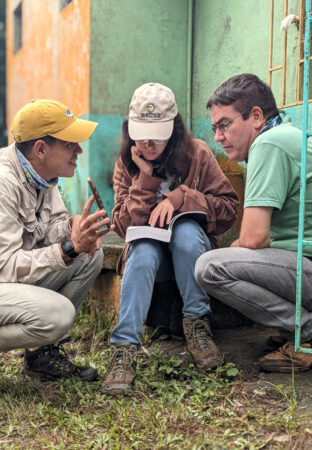
The days passed in a blur of banding practice in the morning, molt theory during the afternoons, and night outings to marvel at the pair of Stygian Owls that lived in the pine trees surrounding the banding station. But for the four of us who had a rapidly approaching and demanding exam, our days also included a lot of study of Pyle, the bird bander’s “bible,” looking through wing pictures, and reading of the bander’s study guide. Eventually, the first day of the certification arrived. The examiners put to test our abilities at extracting birds from the nets, and also our handling and banding skills. The practical exam also included the setting up of mist nets.
That afternoon, we had the most dreaded and unnerving part of the certification: the four-hour long written exam that comprised questions ranging from bird safety to molt theory. We needed a minimum of 80% of correct answers to be qualified as banders. I remember the feeling of relief when I handed my exam sheet to Holly. Evaluations were not finished yet, so I went to bed tired but at least more relaxed knowing that the toughest part was over. During the remaining sessions we were going to be examined in the use and understanding of the Pyle guide, and a test where we were expected to accurately identify species, age, and sex from 10 bird photos.
Supporting Success
As we were drawing near the end of the certification, exhaustion and tension were high. I must acknowledge the supportive spirit of the workshop participants, the station’s staff, and our examiners alike. They all put up their best smiles, and constantly cheered us on. Emelina almost fed us too much and made us drink nearly too much coffee. But I don’t have enough “thank you” words for every person that tolerated my stressful humor or made me laugh those days. I know that I owe them a huge debt that I can now call myself a NABC certified bander!!
For in the end, thanks to our trainers and all the support I received, I achieved my goal – I left the workshop as a NABC certified bander, as did Josmar! Later, two of my Cuban colleagues Carmen Plasencia Leon and Arnaldo Toledo, would finish the final portion of the exam and leave the second BirdsCaribbean Banding Workshop in the Dominican Republic (February 2023) as NABC banders. Back in Fall 2022, Zoya Buckmire from Grenada received her NABC certification whilst interning at Klamath Bird Observatory (KBO) in Oregon. This means that in the last year the Caribbean Bird Banding Network has now helped the first five Caribbean banders get their NABC bander certification. This lays the foundation for the future growth of the network.
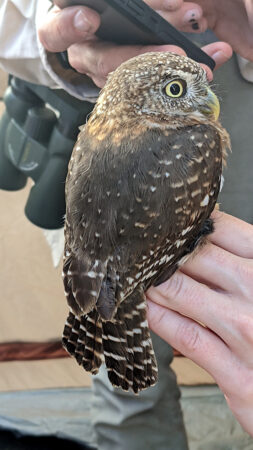
I said earlier that the Cuba Banding Workshop was a milestone. But it wasn´t because I proved myself in a challenging exam. It was the invaluable lesson that if we as a country want to have a broad understanding of our bird population dynamics, we have to work with a team spirit. We have to go for independence and self-sufficiency and develop our own research objectives, and training opportunities. This workshop was the first step towards that ambitious goal.
About Daniela: I have a Bachelor’s degree in Biology and I am part of the Bird Ecology Group of the University of Havana. As a professor trainee I give lectures and seminars in Ecology and Vertebrate Zoology. I am also a graduate student. My research interests include bird population dynamics, movements, and migration. I am a passionate bird bander and molt nerd, and recently created a banding station at the National Botanical Garden in Havana, a dream project of mine. I believe that long-term monitoring of bird populations will greatly increase our knowledge about the ecology of our resident and understudied species, and will highlight the importance of Cuba and the Caribbean as a wintering and stopover site for Neotropical migrants.
Science communication and public outreach are also very close to my heart. Organizing activities for the Caribbean Bird Endemic Festival and World Migratory Bird Day, and managing the social media accounts of the Bird Ecology Group on Instagram and Facebook, perfectly combine my interests in bird conservation and public outreach. I am a fervent advocate of the idea that research needs to be shared in every step of the process, and that science must be taken out of the ivory tower of academia and be made by and for all people. Empowering locals and creating community alongside building conservation networks should be the goal of all Caribbean islands. As a proud member of BirdsCaribbean, my dream is to keep contributing to the development and success of bird research projects in the region, as well as educating the next generation of conservationists.
Acknowledgements: BirdsCaribbean thanks all of our members and donors whose support helped make this workshop and our Caribbean Bird Banding network possible.

